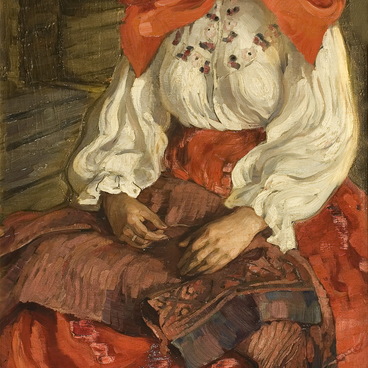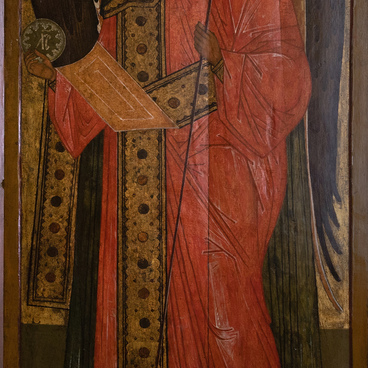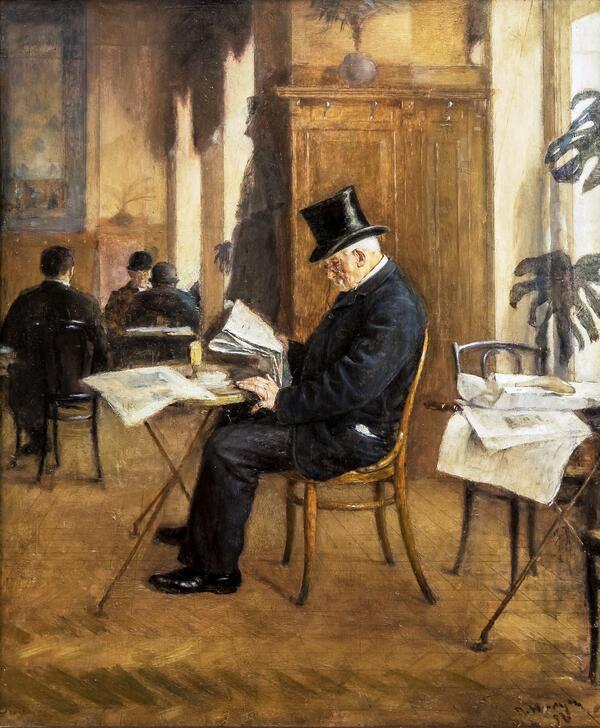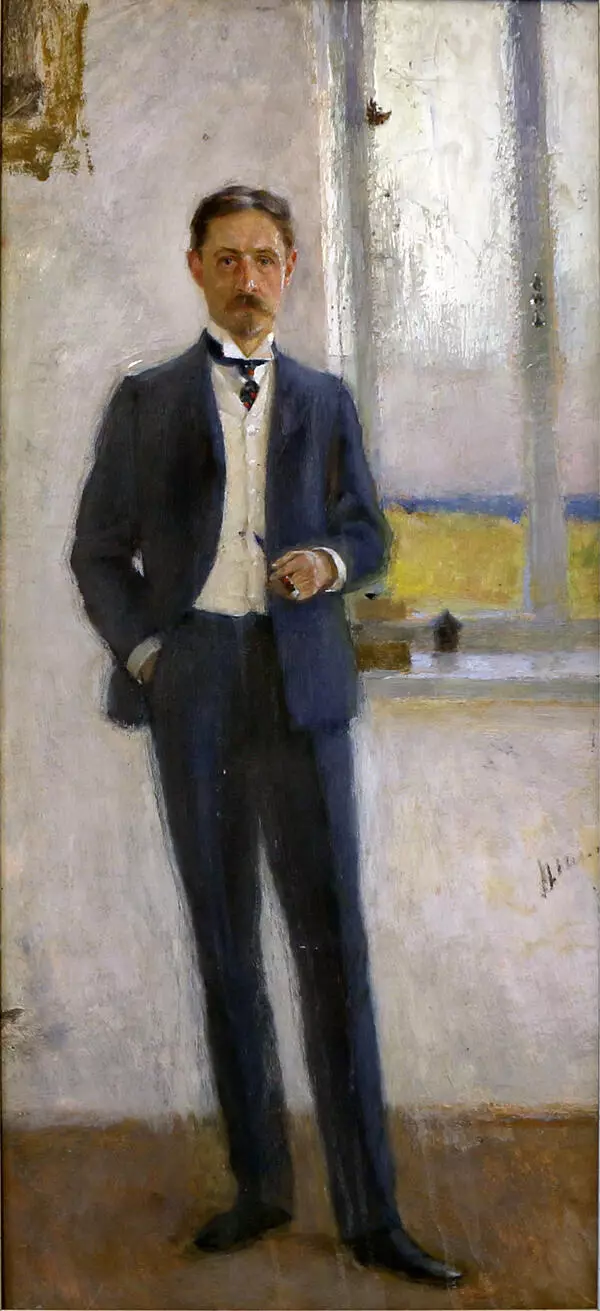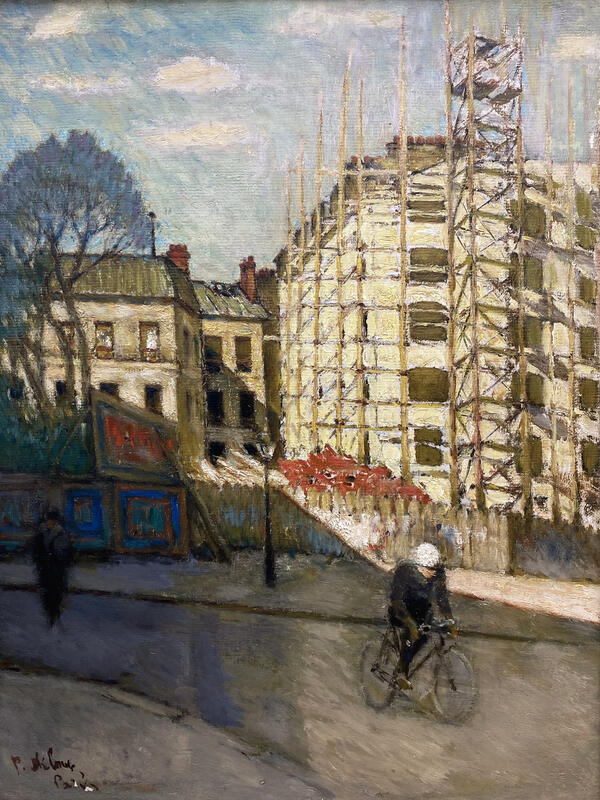Pyotr Alexandrovich Nilus painted “White Service” in Paris in 1930. At that time, the symbolic and romantic period in the artist’s work ended, and he found a new artistic style. The “White Service” is a part of the so-called white series, in which Pyotr Nilus painted exquisite white porcelain and glassware, flowers, fruits, and vegetables on a white background. The painting depicts an assembled tea set on a tray, a creamer, a sugar bowl, cutlery, a tin of olives and a bright yellow lemon. The three piled up cups on the tray indicate that the still life depicts the end of a tea party: the dishes are washed, assembled and dried. Maybe the painting depicts a family tea party with the wife and stepdaughter or friends of the artist. The space of the table is flooded with light, and the viewer sees a lot of large flecks of light on the dishes, on the lemon and the can.
Despite the fact that white in painting is an achromatic color and does not have any color shade, the researchers believe that in Nilus’s paintings it acquires a color shade and sounds in a new way. His white became a common name among artists, and it was called “the white of Nilus.”
Pyotr Aleksandrovich sought to create his paintings by using a “spontaneous flow from the inside, ” in one or two approaches, without completely finishing the painting. Painting should preserve the freshness and immediacy of perception, convey the “elusive from nature, ” be its “distant echo, ” the artist believed. He himself staged still lifes in his studio, sometimes asked his wife not to clean the dishes and food after a meal, painted a relaxed atmosphere, and depicted the aristocracy of everyday life.
In emigration, the artist achieved popularity in
the artistic environment, regularly exhibited in galleries, earned only by his
work, but longed for Russia. In a foreign land, he was supported by his wife
Bertha Golubovskaya and stepdaughter Valentina Golubovskaya. They kept a
register of exhibitions, exhibited works, formed an archive of correspondence,
recordings, exhibition catalogs, posters, press reviews and invitations. In
many ways, thanks to their efforts, the legacy of Pyotr Aleksandrovich has been
preserved to this day in a significant amount. The artist’s works are kept in
the Louvre, in other museums in France, the National Gallery of Painting in
Bulgaria, the Museum of Russian Culture and History in Prague, and in the
collection of Georgetown University in Washington.

